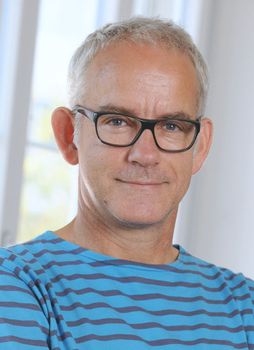Distinguished iNANO Lecture: E-Field Triggered Single-Molecule Switches
Professor Dr. Marcel Mayor, Department of Chemistry, University of Basel, Switzerland
Info about event
Time
Location
iNANO Auditorium (1593-012), Gustav Wieds Vej 14, 8000 Aarhus C

E-Field Triggered Single-Molecule Switches
Since the beginning of this century, the reliable integration of single molecules in electronic circuits became feasible.[1] However, the spatial confinement of the molecular junction makes the addressing of exclusively the integrated molecule by an external stimulus challenging. We thus became interested in single molecule junctions responding on the electric field applied across the junction. As first example, a FeII bis-terpyridine (tpy) complex was designed and synthesized as single molecule spin-switch.[2] While one tpy-ligand bridges both electrodes of the junction, the second tpy-ligand is decorated with terminal push-pull substituents. By ramping the applied voltage, the electric field is supposed to distort the perpendicular arrangement of both tpy-ligands. The spin state of the central FeII-ion depends on its coordination sphere and thus, the applied electric field is expected to trigger a spin state transition that should be detectable in the transport current through the junction. Detailed statistical analysis of numerous junctions - measured in a mechanical controlled break junction set-up at low-T - indeed display an increase in bi-stable junctions with increasing dipole moment in the tpy-ligand, supporting the hypothesized switching mechanism.
In a purely organic architecture, a rigid 9,9’-spirobifluorene scaffold was developed as solid and well defined anchor structure for Au(111) surfaces.[3] Interestingly, the 9,9’-spirobifluorene platform not only allows the controlled immobilization and lateral self-assembly of the structure on the metal surface, but also the efficient electronic coupling to the electrode ( = metal surface). A first model compound was decorated with a nitrile group as both, strongly coupled anchor group and as subunit providing a dipole moment. In a low-T STM experiment, the dipole moment of the nitrile group reacts on the applied electric field bending the substituent like a “molecular cantilever”. As a consequence, the coordinative interaction between the metal tip and the lone pair of the nitrogen exposed by the nitrile group can be reproducibly triggered by short electric pulses - almost making the laterally self-assembled arrays of molecules to single molecule memory units.[4] We are currently working on alternative molecular structures displaying mechanical molecular motion upon application of an electric field.
References
[1] N. Weibel, S. Grunder, M. Mayor, Org. Biomol. Chem. 2007, 5, 2343.
[2] G. D. Harzmann, R. Frisenda, H. S. J. van der Zant, M. Mayor, Angew. Chem. Int. Ed. 2015, 54, 13425.
[3] M. Valášek, K. Edelmann, L. Gerhard, O. Fuhr, M. Lukas, M. Mayor, J. Org. Chem. 2014, 79, 7342.
[4] L. Gerhard, K. Edelmann, J. Homberg, M. Valášek, S. Bahoosh, M. Lukas, F. Pauly, M. Mayor, W. Wulfhekel, Nature Communications, 2017, DOI: 10.1038/ncomms19581
Host: Professor Kurt V. Gothelf, iNANO & Dept. of Chemistry, Aarhus University
Coffe, tea and buns will be served from 10:00 am in front of iNANO AUD.
